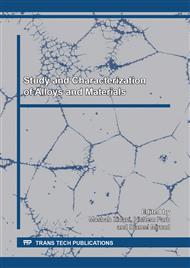p.101
p.111
p.118
p.125
p.141
p.147
p.161
p.169
p.179
Hydrogen Transport and Metal Embrittlement Risk in Storage and Industrial Applications
Abstract:
A physical model studying the diffusion of interstitial atoms has been used in the study of hydrogen redistribution, in order to predict the risk of hydrogen damage in a range of manufacturing processes. In this work, conditions representative of hydrogen storage and some scenarios in the nuclear or chemical industries are considered. A singular advantage of this model is that, contrary to some simplified commercial and academic models, it contemplates diffusion in its most comprehensive description, i.e., with the driving force for atom diffusion being the gradient in chemical activation instead of simply considering it occurs down a composition gradient. Because the model also incorporates thermal history, microstructure, matrix solubility, multiple trapping distributions, interaction with the atmosphere and others, it is ideally suited to study real industrial applications. In this work, several simulations of hydrogen permeation are considered. Hydrogen permeation in industrial applications may introduce damage within the metal structure, leading to delayed failure. In the cases studied hydrogen is transported through a metal wall separating one volume with high hydrogen pressure and/or high temperature from another volume with low hydrogen pressure and temperature. By using such comprehensive physical model, it is possible to study the effects of hydrogen pressure and temperature gradient, wall thickness, metal microstructure and trap distribution on the flux across the wall and on the accumulation of hydrogen within the metal. Furthermore, it makes possible to estimate the embrittlement risk and when necessary the time to fracture. Keywords: hydrogen, steel, permeation, physical model, hydrogen storage, nuclear industry
Info:
Periodical:
Pages:
141-146
Citation:
Online since:
September 2019
Authors:
Keywords:
Price:
Сopyright:
© 2019 Trans Tech Publications Ltd. All Rights Reserved
Share:
Citation:


